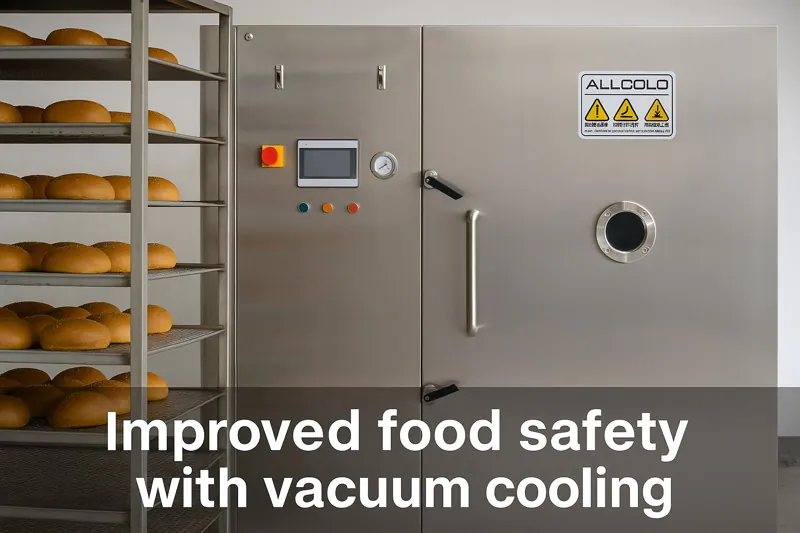
What Are the Advantages of Vacuum Cooling for Bakery Products?
Freshly baked goods taste fantastic but cooling them slowly can damage their quality and freshness.
Vacuum cooling rapidly reduces bakery products’ temperature, improving quality, shelf-life, production efficiency, and saving energy costs compared to traditional methods.
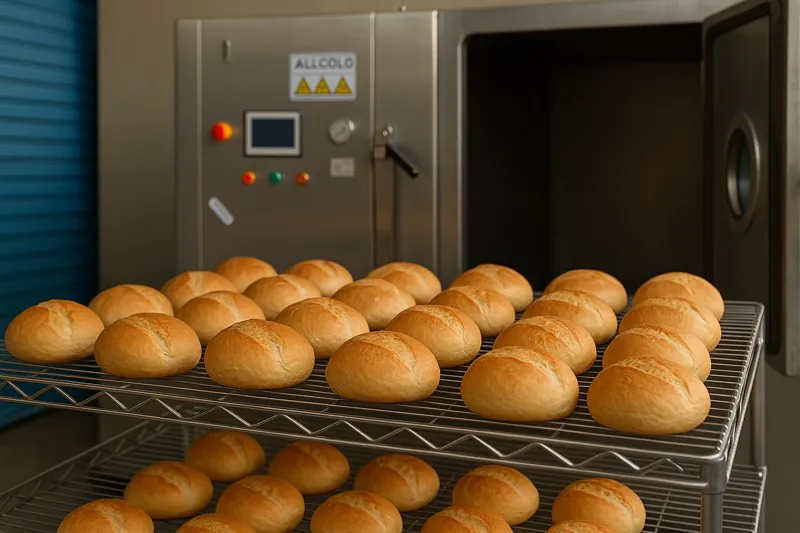
But there’s more to this innovative technology. Let’s explore each advantage in detail.
Does Vacuum Cooling Really Save Time?
Cooling baked goods slowly after baking often creates bottlenecks that hurt production schedules.
Vacuum cooling drastically cuts cooling time from hours to minutes, enhancing productivity and enabling more batches daily.
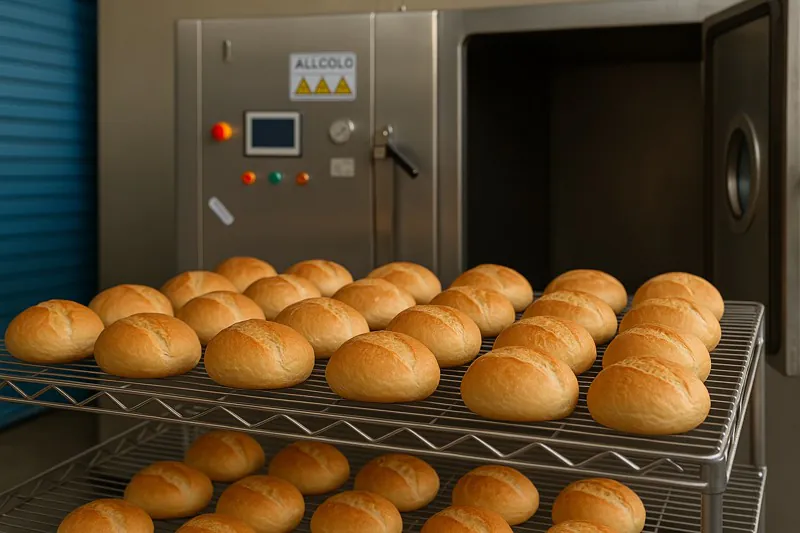
Understanding How Vacuum Cooling Boosts Efficiency
Vacuum cooling achieves rapid temperature reduction by creating a partial vacuum environment. Water within the bakery products evaporates quickly, removing heat rapidly. This contrasts with traditional cooling methods1 like air-cooling or refrigeration, which require extended periods to reach safe handling temperatures.
Consider these time-saving examples:
| Product Type | Traditional Cooling Time | Vacuum Cooling Time |
|---|---|---|
| Bread | 2-3 hours | 10-15 minutes |
| Pastries | 1-2 hours | 7-10 minutes |
| Cakes | 3-4 hours | 15-20 minutes |
Rapid cooling means production cycles2 become shorter, allowing bakeries to increase their daily output significantly. In busy periods, such as holiday seasons or promotional events, this enhanced efficiency can dramatically boost a bakery’s ability to meet demand without adding costly overtime. I have personally seen clients double their output without additional shifts just by implementing vacuum cooling3 technology
Can Vacuum Cooling Improve Product Quality?
If bakery products cool unevenly, their texture and appearance often suffer, disappointing customers.
Vacuum cooling ensures even cooling throughout each product, maintaining freshness, softness, and consistent quality from crust to crumb.
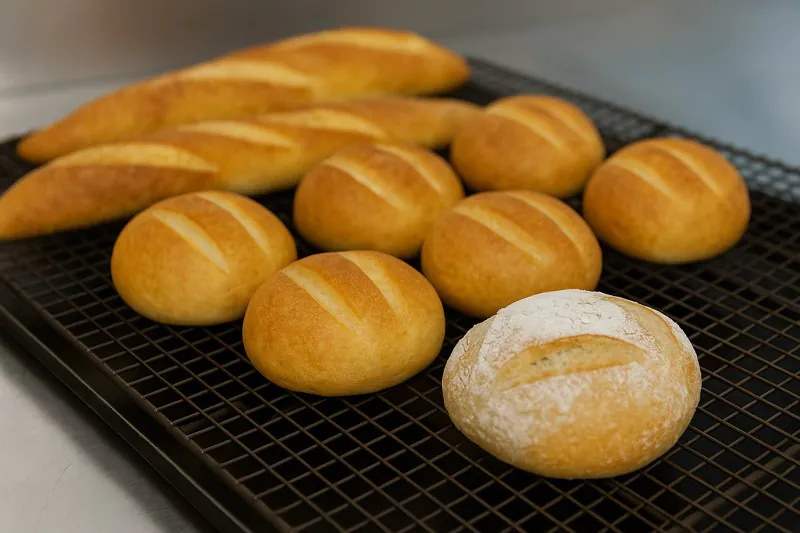
Why Vacuum Cooling Protects Product Integrity
Uniform cooling is critical to baked goods’ quality. Traditional cooling methods can cause the outer layers of products to become overly dry and crusty, while the insides remain hot and moist, resulting in uneven textures. Vacuum cooling4 tackles this by evaporating moisture evenly from the interior outward, maintaining balance and consistency throughout.
Here’s how vacuum cooling maintains quality:
- Moisture Retention5: It prevents excessive drying, preserving soft textures.
- Consistent Temperature6: Internal and external temperatures are balanced.
- Avoiding Structural Damage: Products remain structurally intact without cracks or deformation.
For example, a bakery client of mine switched from air-cooling to vacuum cooling, noticing immediate improvements in their bread’s texture. Customers remarked on the increased softness and freshness, which significantly boosted repeat purchases.
Does Vacuum Cooling Extend Shelf-Life?
Products with short shelf lives can result in significant financial losses due to spoilage and returns.
Vacuum cooling rapidly moves products through bacterial growth temperatures, extending shelf-life significantly and reducing spoilage risks.
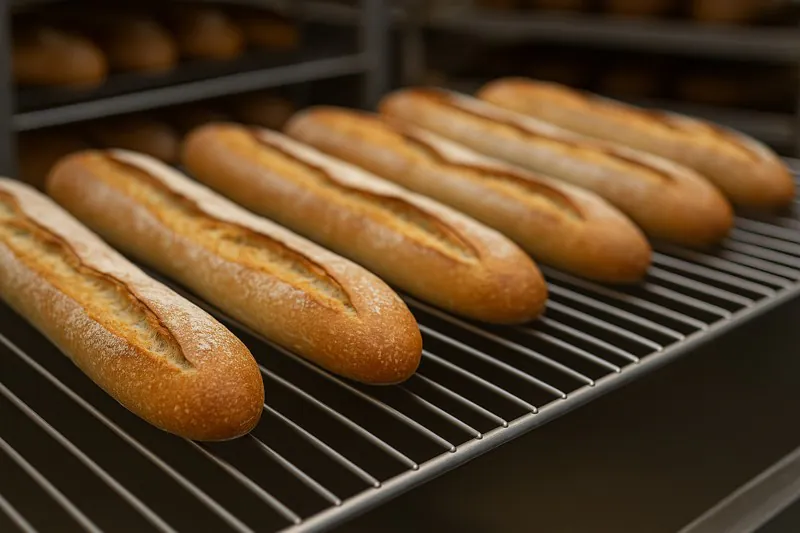
How Vacuum Cooling Reduces Spoilage
When bakery items cool slowly, they spend longer periods at temperatures ideal for bacterial growth7. Vacuum cooling8 accelerates the process, quickly bypassing this hazardous temperature zone (approximately 20°C – 40°C). This greatly reduces the risk of spoilage.
Here’s an overview of potential shelf-life improvements9:
| Bakery Product | Traditional Shelf-Life | Vacuum-Cooled Shelf-Life |
|---|---|---|
| Bread | 2-3 days | 5-6 days |
| Pastries | 1-2 days | 3-4 days |
| Cakes | 3-4 days | 6-8 days |
This extended shelf-life allows bakeries and supermarkets to minimize waste and reduce returns. One of my customers, a large bakery supplier, reduced product returns by 50% after adopting vacuum cooling, substantially increasing their profitability.
Can Vacuum Cooling Improve Food Safety?
Inconsistent or prolonged cooling methods can increase the risk of contamination, creating potential health hazards.
Vacuum cooling rapidly cools baked goods uniformly, reducing exposure to harmful bacteria and enhancing food safety.
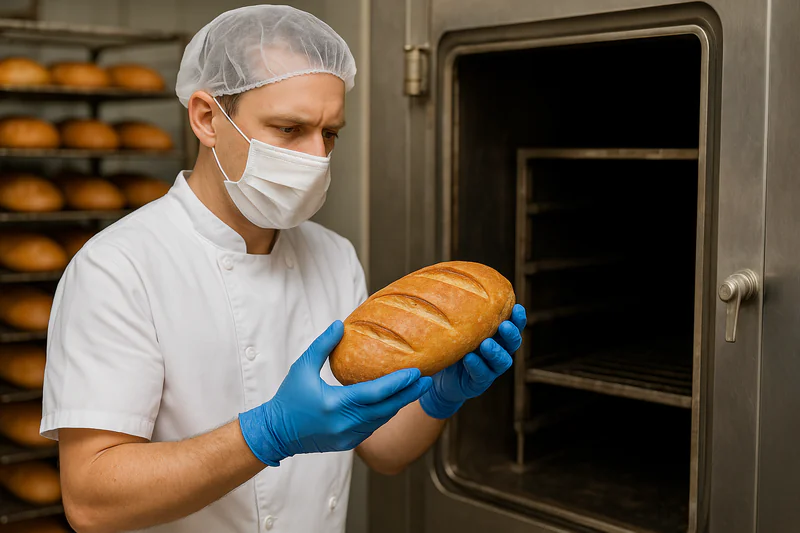
How Vacuum Cooling Enhances Food Safety Practices
The rapid cooling rate provided by vacuum technology not only preserves product quality but also significantly improves food safety. By rapidly transitioning through dangerous temperature zones, vacuum cooling minimizes bacterial growth opportunities.
Benefits include:
- Reduced Risk of Bacterial Growth: Minimal time spent at harmful temperatures limits contamination.
- Improved Compliance: Easier adherence to strict food safety standards such as HACCP.
- Simplified Cleaning: Vacuum coolers are designed for easy sanitation, reducing cross-contamination risks.
One of my clients, Sophia from Singapore, manages a busy central kitchen. She specifically highlighted the value of vacuum cooling systems for meeting stringent hygiene and food safety requirements. Since adopting this method, her kitchen has seamlessly integrated these systems into their HACCP-certified production line, dramatically reducing food safety incidents.
Can Vacuum Cooling Lower Energy Costs?
High energy consumption in traditional cooling methods can significantly increase operating expenses.
Vacuum cooling systems operate briefly, consuming less total energy than prolonged traditional cooling methods, lowering overall energy costs.
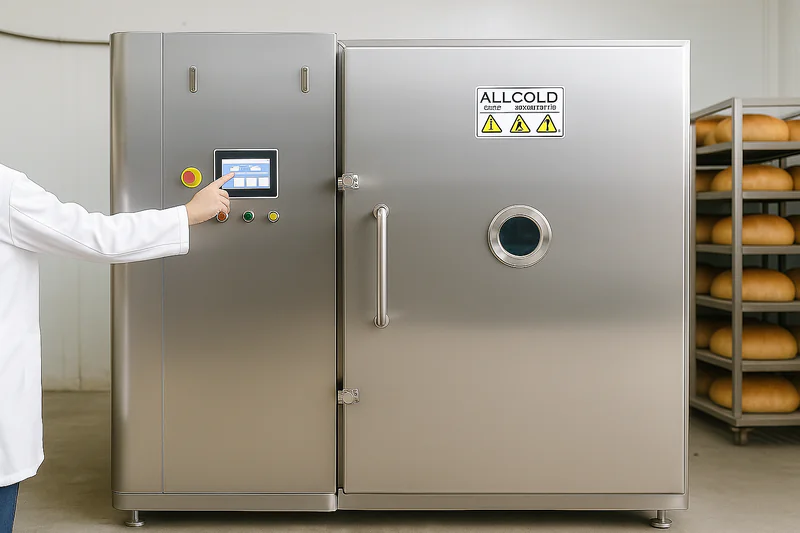
Evaluating the Energy Efficiency of Vacuum Cooling
Initially, vacuum cooling might seem energy-intensive due to the powerful vacuum pumps involved. However, the extremely short cycle time offsets the energy use, resulting in overall lower consumption compared to traditional methods.
Here’s a clear energy consumption comparison:
| Cooling Method | Average Power Consumption (kWh per batch) |
|---|---|
| Traditional | 20-30 kWh (running hours) |
| Vacuum Cooling | 10-15 kWh (minutes) |
This reduced energy consumption leads directly to lower utility bills and contributes to environmental sustainability initiatives. A bakery client, Carlos from Mexico, reported that vacuum cooling reduced his monthly energy costs by nearly 40%. Over a year, this translated into substantial savings and a notable improvement in profitability.
Conclusion
Vacuum cooling offers bakeries rapid cooling, improved quality, extended shelf-life, enhanced safety, and substantial energy savings—key advantages for competitive success.
-
Understanding traditional cooling methods helps appreciate the advantages of newer technologies like vacuum cooling. ↩
-
Learn strategies to optimize production cycles, which can lead to increased efficiency and profitability in bakeries. ↩
-
Explore how vacuum cooling can enhance efficiency and output in bakeries, especially during peak times. ↩
-
Explore how vacuum cooling enhances food quality and extends shelf life, ensuring freshness and texture. ↩
-
Learn about the importance of moisture retention in baked goods and its impact on texture and taste. ↩
-
Discover why maintaining a consistent temperature is crucial for achieving the best baking results and product quality. ↩
-
Learning about bacterial growth can provide insights into food safety and the importance of proper cooling methods. ↩
-
Understanding vacuum cooling can help you grasp its benefits in reducing spoilage and extending shelf life for bakery products. ↩
-
Exploring shelf-life improvements can reveal how they enhance product quality and reduce waste in the bakery industry. ↩
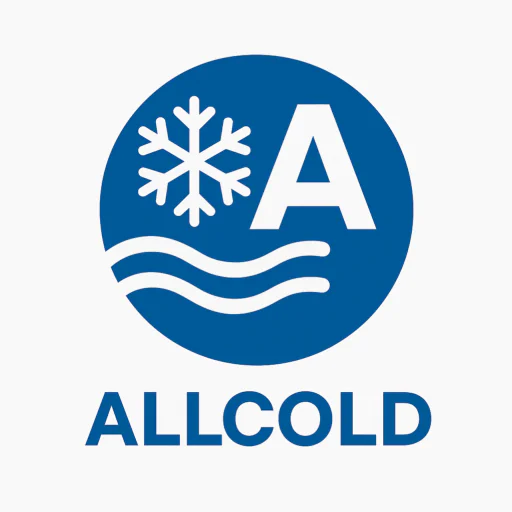
Mila
You May Also Like
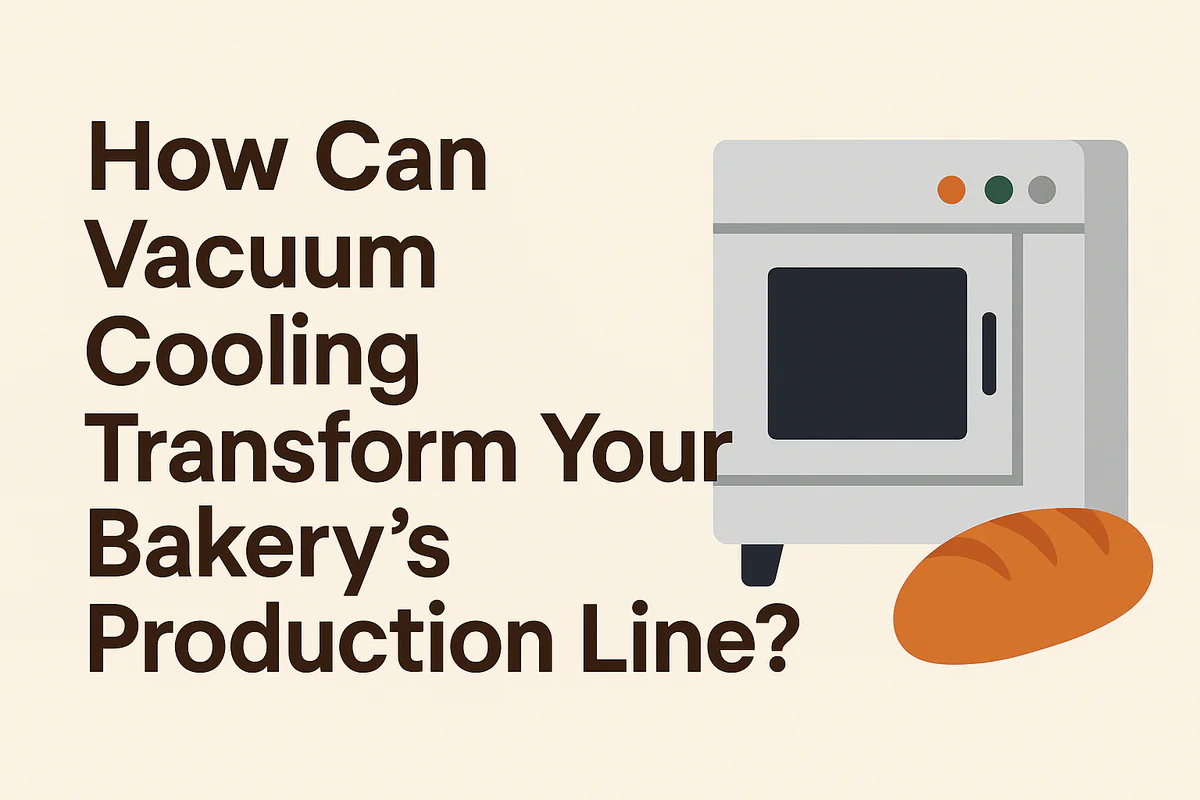
How Can Vacuum Cooling Transform Your Bakery's Production Line?
Your ovens are incredibly efficient, but your bakery floor is clogged with cooling racks. This dead time kills your throughput,
